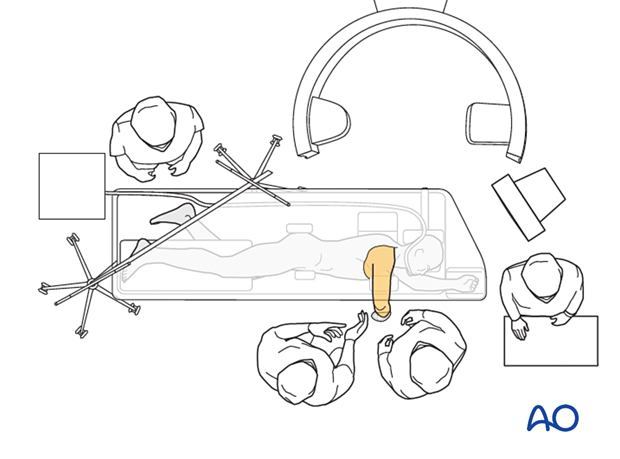Lateral decubitus position
1. Introduction
Open reduction and fixation, arthroplasty, and external fixation of distal humeral fractures may all be performed in the lateral position. This position may also be used for exploration of the radial nerve.
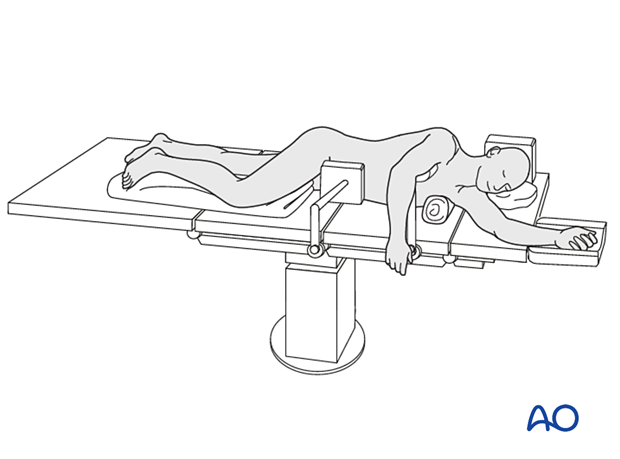
2. Preoperative preparation
Operating room personnel (ORP) need to know and confirm:
- Details of the patient (including a signed consent form and appropriate antibiotic and thromboprophylaxis)
- Patient positioning
- Comorbidities, including allergies
- Site and side of the fracture
- Ensure that the operative site has been marked by the surgeon
- Type of operation planned
- Implants to be used
- Condition of the soft tissues
3. Anesthesia
- General anesthesia
- Regional nerve block
- Combination of nerve block and light general anesthesia
4. Patient positioning
Secure the patient’s body with padded side supports. Add a pad under the thorax to avoid axillary nerve compression injury in the contralateral shoulder. Confirm that there is no pressure on this shoulder.
Keep both legs flexed for a more stable position. Place a soft cushion under the lateral aspect of the knee to prevent excessive pressure on the peroneal nerve. Place a pillow or soft support between the legs.
To allow adequate access for imaging, position the patient as far as possible toward the side of the table from which the arm will be accessed.
The contralateral arm should not interfere with intraoperative fluoroscopic imaging. It may be placed in 90° anteflexion of the shoulder and 90° elbow flexion.
Always ensure the anesthetist is satisfied with the position and support of the patient’s face and has adequate access to the airway at all times.
Take great care with the soft-tissue and skin pressure points, particularly in the elderly.
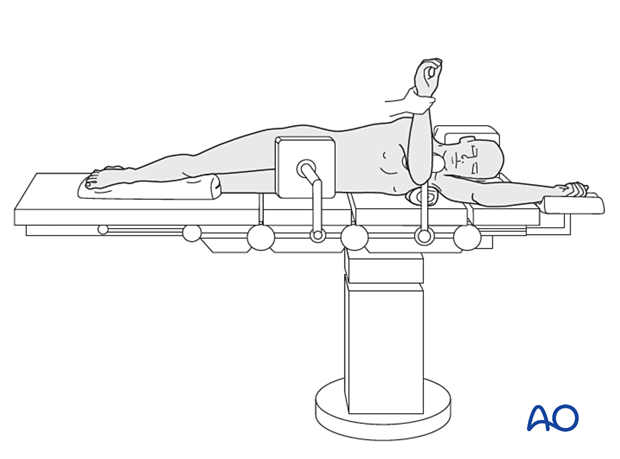
Position the operated arm with the shoulder with 90° flexion over a support or bolster with appropriate padding.
It should be possible to estend and flex the elbow beyond 90° to facilitate operative exposure.
A small padded table can be placed under the forearm to support the elbow in extension when necessary.
If a tourniquet (sterile or nonsterile) is to be used, make sure the cuff is narrow enough that it will not encroach on the surgical field required for exposure.
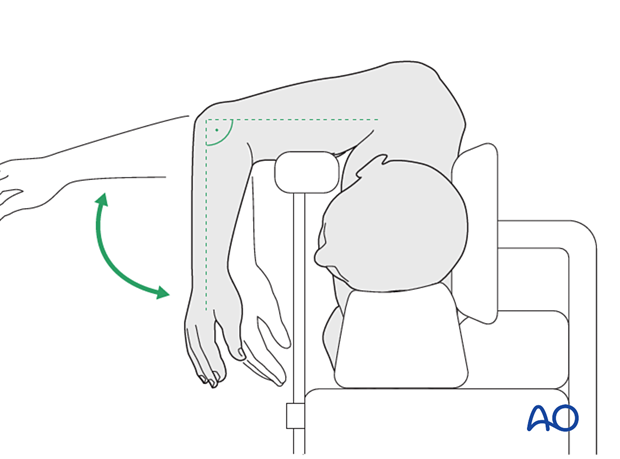
5. C-arm positioning
Imaging can be performed with plain films or with the use of the image intensifier. Plain films are more appropriate if it is difficult to obtain adequate access with the image intensifier.
The C-arm can be brought in from the opposite side of the table in a horizontal orientation parallel to the floor. This allows for lateral images to be taken by raising the elbow ...
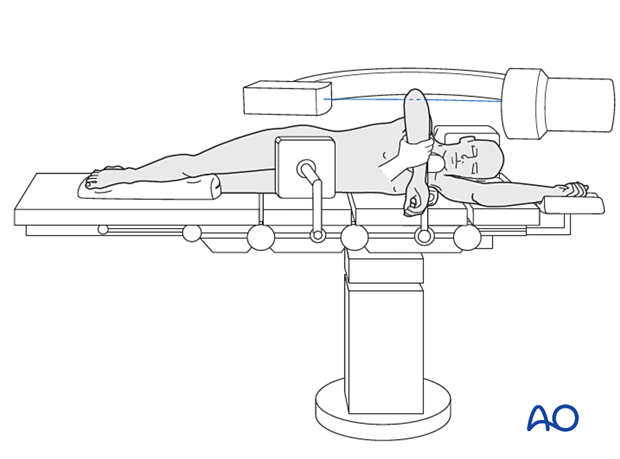
... and AP images by rotating the shoulder. This technique keeps the C-arm away from the surgeons and in a fixed position throughout the operation.
The C-arm may also be introduced from the top of the table.
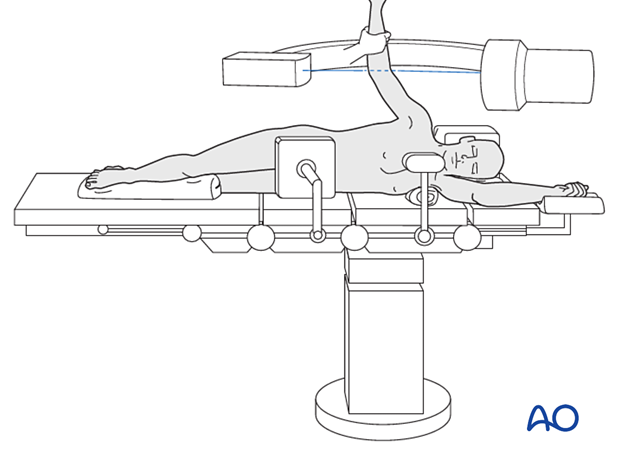
6. Skin disinfecting and draping
Ensure there is adequate access for imaging before disinfecting and draping.
During disinfecting and draping, make sure the shoulder is not too extended, particularly in elderly patients. It is often useful to lower the table for this part of the preparation to make it easier for the assistant and then adjust the height to suit the surgeon.
Disinfect the exposed area from the shoulder to the hand, including the axilla, with an antiseptic.

Apply an extremity drape to the affected arm, ensuring that sufficient coverage is achieved to access the surgical field. Drape the distal forearm with a stockinette and fix it with tape.
Drape the image intensifier.
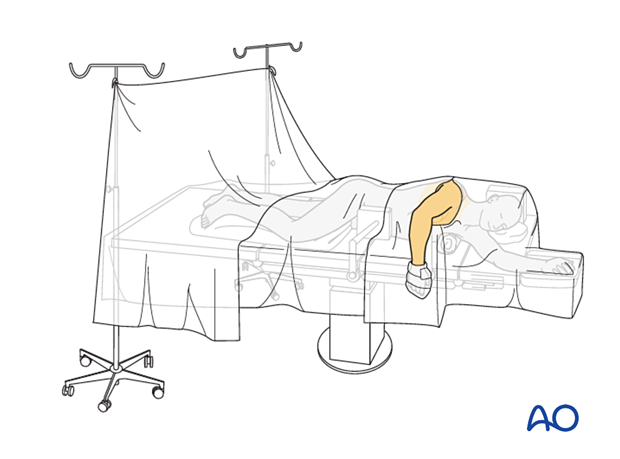
7. Operating room set-up
The surgeon and assistant stand adjacent to the patient’s elbow.
The ORP is positioned adjacent to the surgical team at the head of the table.
The C-arm is brought in from the opposite side of the table.
Place the image intensifier display screen in full view of the surgical team and the radiographer.
